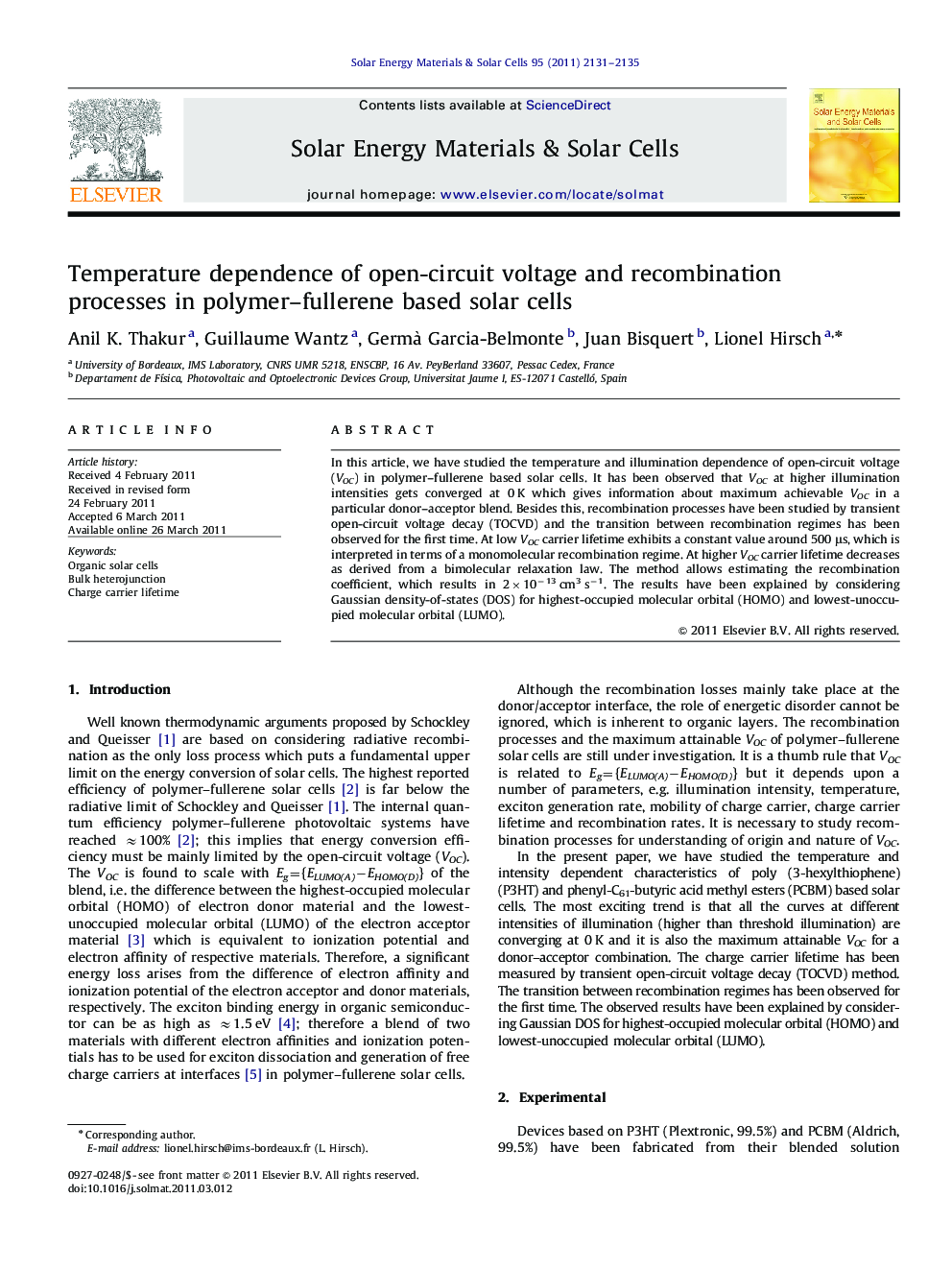| Article ID | Journal | Published Year | Pages | File Type |
|---|---|---|---|---|
| 78758 | Solar Energy Materials and Solar Cells | 2011 | 5 Pages |
In this article, we have studied the temperature and illumination dependence of open-circuit voltage (VOC) in polymer–fullerene based solar cells. It has been observed that VOC at higher illumination intensities gets converged at 0 K which gives information about maximum achievable VOC in a particular donor–acceptor blend. Besides this, recombination processes have been studied by transient open-circuit voltage decay (TOCVD) and the transition between recombination regimes has been observed for the first time. At low VOC carrier lifetime exhibits a constant value around 500 μs, which is interpreted in terms of a monomolecular recombination regime. At higher VOC carrier lifetime decreases as derived from a bimolecular relaxation law. The method allows estimating the recombination coefficient, which results in 2×10−13 cm3 s−1. The results have been explained by considering Gaussian density-of-states (DOS) for highest-occupied molecular orbital (HOMO) and lowest-unoccupied molecular orbital (LUMO).
Graphical abstractFigure optionsDownload full-size imageDownload as PowerPoint slideHighlights► VOC at higher illumination intensities gets converged at 0 K. ► Transition between recombination regimes has been observed for the first time. ► At higher VOC carrier lifetime decreases as per bimolecular relaxation law.
